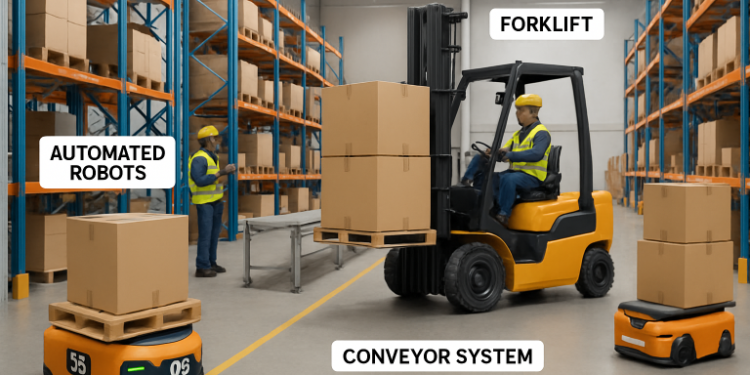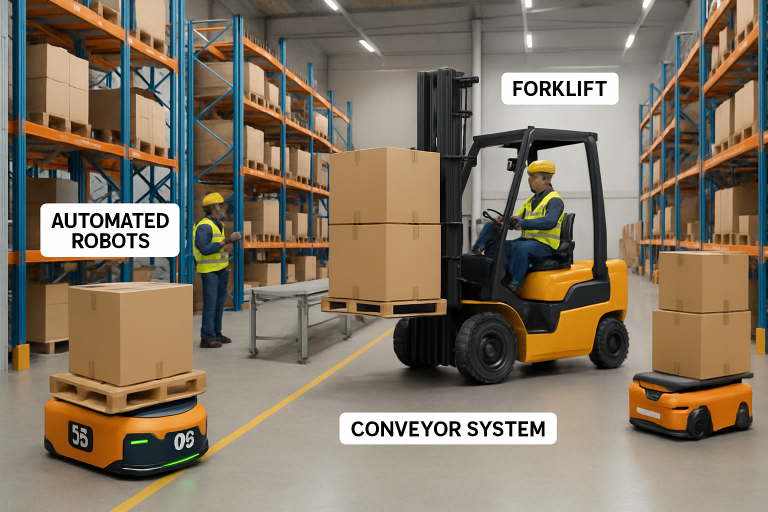How Material Handling Equipment is Shaping Warehouse Efficiency and Safety

Table of Contents
- 1 Why Material Handling Equipment Matters in Warehousing
- 2 Types of Material Handling Equipment Making an Impact
- 3 How Automation Is Redefining Warehouse Roles
- 4 Safety First: Reducing Risks With Smart Equipment
- 5 Training: The Unsung Hero of Warehouse Efficiency
- 6 Maintenance: The Key to Longevity and Reliability
- 7 Sustainability and the Future of Material Handling
- 8 Staying Competitive in a Rapidly Changing Industry
Why Material Handling Equipment Matters in Warehousing
As global commerce accelerates and customer expectations for rapid order fulfillment intensify, warehouses are under pressure to deliver—fast, safely, and efficiently. Material handling equipment (MHE) represents the backbone of these operations, dictating how products move from receiving to storage to shipping. Implementing state-of-the-art equipment enhances efficiency but, perhaps more importantly, drives significant gains in workplace safety. More businesses are turning to custom material handling equipment to solve unique challenges, enabling facilities to adapt workflows, reduce bottlenecks, and optimize floor space according to their exact needs.
Warehouses investing in specialized MHE see improvements in KPIs. Tailored systems streamline processes and enhance safety by reducing manual tasks and hazards. As supply chains grow complex and demand stays high, agility is vital. Forbes states that adaptable, smart equipment is key for sustained growth and risk reduction.
Types of Material Handling Equipment Making an Impact
A modern warehouse uses various material handling tools, each with a strategic role. Forklifts, including traditional and narrow-aisle, move heavy palletized loads. Pallet jacks, hand trucks, and order pickers handle lighter, frequent tasks. Conveyor systems, powered or gravity-fed, speed cargo movement, while robotics automate repetitive tasks. Facilities increasingly incorporate automated guided vehicles (AGVs) or autonomous mobile robots (AMRs), adapting to changing layouts.
Choosing the right equipment involves matching capabilities to storage, SKU profiles, and throughput. High-bay racking might need specialized reach trucks, and e-commerce centers often use modular conveyor setups that scale with needs. Custom solutions’ ability to meet diverse requirements drives ongoing MHE evolution and adoption.
How Automation Is Redefining Warehouse Roles
Incorporating automation creates an environment where humans and technology work together. Systems like ASRS, goods-to-person, and smart robots handle routine tasks, freeing employees for higher-value work. This helps counter labor shortages, reduces errors, improves accuracy, speeds up processing, and adapts better to seasonal peaks. Even small steps, like using pick-to-light or automated conveyors, lead to noticeable efficiency gains.

Safety First: Reducing Risks With Smart Equipment
Workplace safety is key to successful material handling. Modern equipment has intuitive controls, sensors, alarms, and anti-collision features to prevent accidents. Ergonomic operator stations reduce fatigue and injuries, while wearable tech and real-time data ensure safety and support improvements. OSHA underscores the importance of MHE for compliance and incident prevention. Warehouses with proactive safety measures like regular audits, updated training, and modern equipment report fewer injuries and higher productivity.
Training: The Unsung Hero of Warehouse Efficiency
Maximizing equipment performance relies on a well-trained workforce. Comprehensive onboarding and ongoing learning ensure operators use MHE safely and efficiently. Good training boosts confidence, reduces errors, and promotes a safety-first culture. It also retains skilled workers by fostering engagement and trust. Research from Safety+Health Magazine shows trained warehouses are safer, with higher job satisfaction and productivity, highlighting the importance of investing in people and technology.
Maintenance: The Key to Longevity and Reliability
Preventive maintenance bridges the gap between high equipment uptime and productivity drops. Regular inspections, lubrication, part replacements, and updates extend machine life, lower costs, and prevent breakdowns. Maintenance logs help managers make informed decisions, reducing costs and safety risks. Proper resource allocation ensures compliance, protecting the business from setbacks and legal issues.
Sustainability and the Future of Material Handling
Warehousing faces environmental scrutiny as regulations and consumer demands push for green solutions. Manufacturers now produce energy-efficient equipment with recyclable frames, reducing carbon footprints. Sustainable facilities boost brand, cut utility costs, and access incentives. Future trends include renewable energy, circular supply chains, and eco-friendly designs to meet regulations and customer expectations.
Staying Competitive in a Rapidly Changing Industry
Material handling is a sector defined by constant evolution. Staying ahead means being proactive—investing in the latest advancements, supporting ongoing education, and staying informed about industry trends. The adoption of custom material handling equipment and real-time analytics platforms will separate future-ready warehouses from those struggling to keep pace. As consumer demand, regulatory pressures, and technological options evolve, embracing continuous improvement is no longer optional; it’s a strategic imperative.

